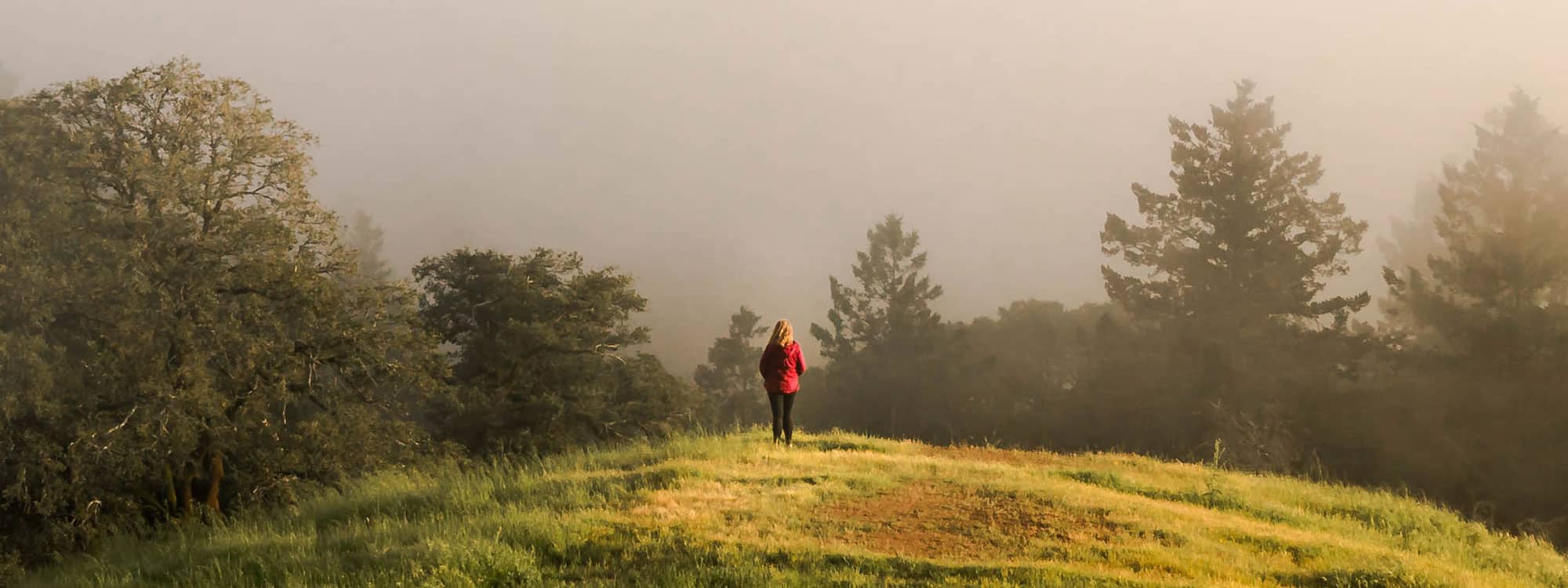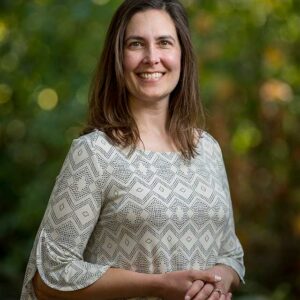News alerts flood our digital and social channels these days. The topical and networking webinars to attend are multiple. My own perspectives (and emotions) about the future—of our global society, the goals we all were working toward just a month ago, what a “new normal” for the Bay Area will look like—shift on an hourly basis.
One way I stay grounded right now is to reflect on the bigger picture as the puzzle pieces change shape before our eyes. What is our response to COVID-19 teaching us and what lessons can we draw from this experience?
Amidst all of the excellent journalism, translatable data, and anecdotal evidence available to us, we are still living in uncertain times. Yet, being able to persevere without tuning out, draw conclusions, and make decisions in the face of uncertainty—then adapt when new information arises—is exactly the kind of muscle we need to tone during this global pandemic. If we can do that, we can better position ourselves to address the other looming global crisis—climate change.
In the spirit of embracing uncertainties, I offer these reflections from current events as I ponder the future of our work at Greenbelt Alliance in building resilience to a changing climate, supporting climate-smart leaders, and enabling climate-forward land-use decisions.
Open Space Is Essential; We Need More Equitable Access and Climate-Centered Stewardship
The packed roads into Marin County and other beaches and parks across the Bay Area the weekend after we entered shelter-in-place underscored the vital role of nature in helping us survive and thrive during a crisis.
At Greenbelt Alliance, we are proud to continue our long-standing work to protect Bay Area open spaces. Now more than ever, our work is imperative as more people are valuing and benefitting from these incredible natural assets.
What we learned: The Bay Area needs equitable access to our open spaces so they are available to all residents. The eventual widespread park closures and vehicular access restrictions, while necessary to maintain social distancing, inadvertently highlighted the inequities present across our region. Right now, if your family does not live within walking or biking distance or a bus-ride away from Bay Area parks and open spaces, you are left out from feeling the healing powers of nature others are privileged to enjoy (while public access is still permissible).
At a time when we seek respite from the coronavirus by heading outdoors, we must also realize that those very open spaces we cherish and rely on are not immune to game-changing natural disasters like rampant wildfires, prolonged droughts, epic floods that cause erosion. Our natural and working lands need policies and programs in place to ensure they are sustainably managed into the future and can continue to provide fresh water, fuel our food system, sequester carbon, and protect us from fire and flood—all the natural functions we depend on as the impacts of a changing climate increase.
Greenbelt Alliance and our supporters and partners are working together now and for the long haul to protect and bolster open spaces to better grapple with the impacts of climate change—from bigger wildfires to longer droughts. This will take planning amidst uncertainty of how bad the climate impacts will really be. Yet, getting planning and policies in place today, we now see all too well, will only help us in the future.
Remembering that California’s wildfire season is just around the corner, I began to ponder the actions we are observing around COVID-19 that are worth repeating (or completely rethinking) as they relate to wildfire planning, preparation, and response.
Preparedness for COVID-19 Was Lacking; Let’s Be Preparing for Wildfire Now
There have been too many accounts of delayed action, unheeded warnings, misinformation, and mixed messaging around our nation’s response to the coronavirus to name them all here. Yet just these two examples help illustrate shortcomings in preparation that would have greatly improved our current situation.
- The Trump Administration dismantled a National Security Council directorate at the White House charged with preparing for pandemics.
- The State of California cut funding for a mobile hospital program and related stockpiles of medicines and medical gear for use during infectious disease outbreaks.
The entire United States is feeling the effects of not being prepared. In hindsight, we could right now be much more resilient in the face of the coronavirus had forward-thinking leaders taken bold actions to put the necessary resources behind planning and preparation. In contrast, we did see bold leadership and a regional approach in policy-making from our Bay Area officials that (as of this writing) seems to be making a difference in our collective ability to curb the COVID-19 contagion.
What we learned: The Bay Area exemplified the level of leadership and coordinated regional response to the coronavirus crisis that we should repeat and strive for in response to the next wildfire. What’s more, unlike with the coronavirus, we do know quite a bit about wildfires from past experience and have in-depth research indicating that wildfires in the western United States are increasing, burning more acres of land, and repeatedly burning in the same areas. In California alone, climate change has already doubled the frequency of extreme fire weather days since the 1980s.
The team at Greenbelt Alliance has a strong track record of moving the local and county-level planning processes to be more climate-smart with their land-use decisions. Now is our chance to pull together with government, community and business stakeholders (even via Zoom) to discuss the practical steps of better integrating wildfire and land-use planning and investments so we are all more prepared for what is to come. And it is our chance to facilitate the tough conversations about what actions it will take to reduce our community’s risks to wildfire.
Let’s work together to prioritize wildfire mitigation policies—like greenbelts that act as buffers and wildfire prevention measures that provide defensible space around our homes and communities—and not look back after a catastrophic event wishing we’d taken those steps.
What we learned: As we watch the incredible strains the coronavirus is placing on our emergency services and health care systems, imagine just how quickly these institutions could be further inundated after a wildfire, specifically from respiratory injuries from smoke inhalation. The more we can prepare now for the impacts of wildfire and its aftermath, the better chances we have to efficiently manage during a crisis. What’s more, if we can focus on enacting land-use policies that reduce the vulnerabilities of our communities to wildfire hazards, the better chances we have in avoiding a disaster in the first place.
There is still much we don’t yet know how to navigate, around COVID-19 or other future threats. Will a post-COVID-19 era motivate more homeowners to move into the wildland-urban-interface in the pursuit of avoiding denser areas, but placing them directly in harm’s way of a wildfire? Will we see a movement to maintain remote work that, come wildfire season, could be completely upended during Public Safety Power Shutoffs?
One thing we know for sure is that COVID-19 is teaching us how to quickly adapt to a new normal. That is one lesson we haven’t adequately learned from increasing wildfires. Unlike COVID-19, we know that the fires will keep coming. We can even predict when they’re most likely to happen. So, just as our world is forever changed by this global pandemic, our urban planning processes, public participation in local government, emergency management coordination, and development decisions cannot revert back to the way things were “before the wildfires”…for learning to live with fire is the new normal.
This famous Einstein quote keeps running through my mind: “We cannot solve our problems with the same level of thinking that created them.”
Now is our chance to improve how we approach a looming crisis like the next wildfire or a complex problem like the accessibility and resiliency of green space across the Bay Area.
Luckily, I get my motivation from the truly vested colleagues at Greenbelt Alliance. Our dedication to the Bay Area’s resilience to multiple climate hazards fuels our work ahead, no matter how uncertain the path may seem.
Photo: Francisco Delgado via Unsplash





